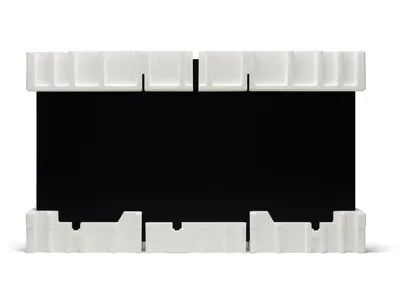Recently, Sony Group announced that it will phase out the use of polystyrene foam cushioning material and adopt Green Planet, a biodegradable polymer from Kaneka, as the cushioning material for large-sized TV packages.
Sony was the first company in the world to eliminate the use of polystyrene foam cushioning, replacing it with Green Planet, a polymer derived from biomass (chemically known as PHBH). The source of biomass is vegetable oil, and microorganisms synthesize polymers through metabolism after ingesting the vegetable oil and accumulating it in the body. It is a fully biobased material, which can be processed and shaped like traditional petrochemical plastics, and it can also be biodegraded in soil and water (including salt water and fresh water).

Kaneka is a comprehensive chemical manufacturing company with a wide range of businesses in the fields of chemical products, functional resins, food, pharmaceuticals, medical devices, electronic materials, and synthetic fibers.
Kaneka began developing Green Planet materials in the early 1990s. At that time, the problem of marine microplastics had not yet gained a global consensus, and Kaneka's starting point was to provide an environmentally friendly solution that did not rely on petroleum resources.
When Kaneka researchers traveled around looking for polymer-producing microbes, they found PHBH-producing microbes in the soil of Kaneka's Takasago industrial plant. However, the microorganisms discovered at that time could only produce small amounts of PHBH, and even if microorganisms were created that could produce large amounts of PHBH, there were many problems to overcome before they could be put to practical use.
Later, through repeated trials while combining Kaneka's years of unique polymer development technology and biotechnology, the first successful industrialization of PHBH was finally achieved in 2019. The material-producing strain was then developed by Tokyo Institute of Technology professor Yoshiharu Doi and five Kaneka researchers.
Until 2019, Kaneka's PHBH product will only be produced in pilot quantities, with a production capacity of 1,000 tons per year.
Beyond 2019, Kaneka is on track to invest approximately ¥2.5 billion to complete the capacity enhancement of PHBH, with a production capacity of 5,000 tons/year.
In 2020, Kaneka made another public announcement to expand PHBH capacity to 20,000 tons per year, with plans to continue to expand capacity to the 100,000-200,000 tons level by 2030.
Kaneka is currently continuing to expand its production facilities in Takasago, Japan, where Kaneka's Green Planet materials can be processed into a wide range of products. Kaneka estimates that Green Planet could replace approximately 25 million tons of traditional single-use plastic products globally each year.Green Planet is used in applications such as straws, cutlery, coffee capsules, bags, films, etc., which alone use more than 5 million tons of plastic annually.
In 2019, Kaneka and Shiseido Co., Ltd. will jointly develop cosmetic containers using Green Planet, the world's first use of Green Planet materials for cosmetic containers.
In addition, since 2019, approximately 10,000 Japanese 7-11 stores have begun using PHBH straws in their cafes, targeting approximately 10,000 stores in Hokkaido, Hokuriku, Kansai, Chubu, Shikoku, Kyushu, and Okinawa.
In 2022, Tokyu Hotel Co., Ltd. will begin using toothbrushes made by Green Planet in its chain of hotels for the first time in Japan.
In 2023, the JAL Group adopted Green Planet as a packaging material for rice balls served at Haneda Airport. This was the world's first case of Green Planet film being used for stand-alone food packaging. In the same year, spoons and forks made from Green Planet were commercialized as part of FamilyMart's “Convenience Apparel BLUE GREEN” program.
Plastic is a convenient and essential part of our lives, but if not handled properly, it can end up in the ocean, negatively impacting ecosystems and people's health. PHBH is the only commercially available biodegradable natural polymer material that can be equated with cellulose and starch and degrade well in different environments. Compared with other degradable materials, it not only has good performance in degradability, but also can be modified by blending with other materials to improve the degradability of the final product.

